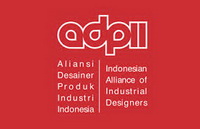Perancangan pet furniture dengan sistem knockdown untuk rumah tinggal
Abstract
Having a pet is a hobby for some people to relieve stress or boredom, because their behavior is considered fun and attractive. Interaction between humans and pets occured in many areas in the house, caused positive psychological effects for their owners. However, the observation showed that not many owners pay attention to the facilities between humans and their pets. This caused a lack of place for interaction and a place to do activities in a relaxed and comfortable atmosphere. The design purpose is to help owners and pets do their activity together, and have a close relationship between each other. The design method is design thinking with the stages of understand, define, point of view, idea, prototype, test, and implement. The concept of this design is "merge", which means combining or joining. The final products are 3 sets of alternative designs and 1 set of realized pet furnituree, consist of storage cabinets, chairs, tables, and sidetable. The knockdown system is applied to this design so that the packaging and the product assembling is more practical and simpler. Activities they can do together, for example, when relaxing, watching TV, reading, or eating-drinking, they still can interact while using this product.
Keywords
Full Text:
PDFReferences
Ai, J. (2022, January). Interactive Cat Furniture Design. In 2021 International Conference on Culture, Design and Social Development (CDSD 2021) (pp. 43-48). Atlantis Press. DOI: https://doi.org/10.2991/assehr.k.220109.009
Boerhendhy, I., Nancy, C., & Gunawan, A. (2003). Prospek dan Potensi Pemanfaatan Kayu Karet Sebagai Substitusi Kayu Alam. Jurnal Ilmu & Teknologi Kayu Tropis, 1(1), 35-46. DOI: https://doi.org/10.51850/jitkt.v1i1.328.g300
John, Rolivia., Kusumarini, Y., & Rizqi, M. T. (2016). Perancangan Pet Furniture Pada Ruang Keluarga. Jurnal Intra, 4(2), 144-155. Retrieved from https://publication.petra.ac.id/index.php/desain-interior/article/view/4624
McConnell, A. R., Brown, C. M., Shoda, T. M., Stayton, L. E., & Martin, C. E. (2011). Friends with benefits: on the positive consequences of pet ownership. Journal of Personality and Social Psychology, 101(6): 1239-1252.
Octavia, J., & Kusumarini, Y. (2022). Perancangan pet furniture ramah anak untuk meningkatkan interaksi antara anak dan hewan peliharaan. Productum: Jurnal Desain Produk (Pengetahuan dan Perancangan Produk), 5(2), 59-66. DOI: https://doi.org/10.24821/productum.v5i2.4554
Prianto, V., & Sari, S. (2021). Perancangan pet furniture dengan implementasi Teknik Makrame. Productum: Jurnal Desain Produk (Pengetahuan dan Perancangan Produk), 4(2), 109-114. DOI: https://doi.org/10.24821/productum.v4i2.4459
Santoso, Monica., Santosa, M., & Kattu, G. S. (2019). Perancangan Fasilitas Multifungsi untuk Mendukung Aktivitas Manusia dan Anjing. Jurnal Intra, 7(2), 418-422. Retrieved from https://publication.petra.ac.id/index.php/desain-interior/article/view/8941
Sulastiningsih, dkk. 2000. Peningkatan Kelas Kuat dan Kelas Awet Kayu Karet. Lembaga Penelitian Hasil Hutan, Bogor.
Sutanto, V. A. H., Kusumarini, Y., & Rizqi, M. T. (2017). Perancangan Dog Furniture untuk Rumah Tinggal. Jurnal Intra, 5(2), 135-143. Retrieved from https://publication.petra.ac.id/index.php/desain-interior/article/view/5750
Towaha, Juniaty., & Daras, Usman. (2013). Peluang Pemanfaatan Kayu Karet (Hevea brasiliensis) Sebagai Kayu Industri. Warta Penelitian dan Pengembangan Tanaman Industri, 19(2), 26-31.
Uktoselja, Merrie Ivana., & Sukada, Budi Adelar. (2020). Ruang Bersama untuk Manusia dan Anjing. Jurnal STUPA, 2(1), 317-328.
Xu, J., & Xia, C. (2023, October). Application of Quality Function Deployment and Theory of Inventive Problem Solving in the Human-pet Shared Furniture Design Process. In 2023 International Conference on Culture-Oriented Science and Technology (CoST) (pp. 61-66). IEEE. DOI: https://doi.org/10.1109/CoST60524.2023.00022
DOI: https://doi.org/10.24821/productum.v7i1.5442
Refbacks
- There are currently no refbacks.
p-ISSN 2477-7900 | e-ISSN 2579-7328

This work is licensed under a Creative Commons Attribution 4.0 International License.
Like & Follow Us











